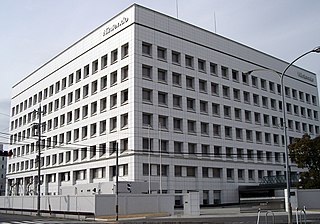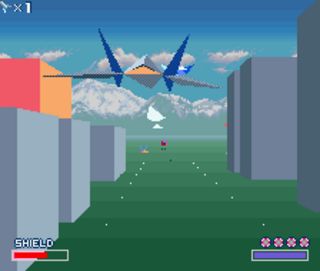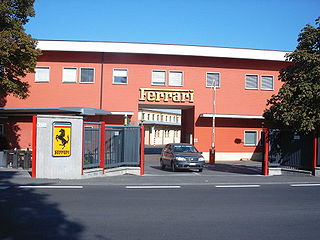
The 32X is an add-on for the Sega Genesis video game console. Codenamed "Project Mars", the 32X was designed to expand the power of the Genesis and serve as a transitional console into the 32-bit era until the release of the Sega Saturn. Independent of the Genesis, the 32X uses its own ROM cartridges and has its own library of games. The add-on was distributed under the name Super 32X in Japan, Genesis 32X in North America, Mega Drive 32X in the PAL region, and Mega 32X in Brazil.

The Sega CD, released as the Mega-CD in most regions outside North America and Brazil, is a CD-ROM accessory for the Sega Genesis video game console designed and produced by Sega as part of the fourth generation of video game consoles. It was released on December 12, 1991 in Japan, October 15, 1992 in North America, and April 2, 1993 in Europe. The Sega CD lets the user play CD-based games and adds hardware functionality such as a faster central processing unit and graphic enhancements. It can also play audio CDs and CD+G discs.
The Sega VR is a virtual reality headset that was under development by Sega. Versions were planned for arcades and consoles, but only the arcade version was released, while the home console versions were cancelled.

The Sega Saturn is a 32-bit fifth-generation home video game console developed by Sega and released on November 22, 1994 in Japan, May 11, 1995 in North America, and July 8, 1995 in Europe. The successor to the successful Sega Genesis, the Saturn has a dual-CPU architecture and eight processors. Its games are in CD-ROM format, and its game library contains several arcade ports as well as original games.
A video game console is a computer device that outputs a video signal or visual image to display a video game that one or more people can play.

The Genesis Nomad is a handheld game console manufactured by Sega and released in North America in October 1995. The Nomad is a portable variation of the Sega Genesis home video game console. Based on the Mega Jet, a portable version of the home console designed for use on airline flights in Japan, Nomad served to succeed the Game Gear and was the last handheld console released by Sega. In addition to functioning as a portable device, it was designed to be used with a television set via a video port. Released late in the Genesis era, the Nomad had a short lifespan.
Sega Meganet, also known as the Net Work System, was an online service for the Mega Drive in Japan and later Brazil. Utilizing dial-up Internet access, Meganet was Sega's first online multiplayer gaming service, and functioned on a pay to play basis. The system functioned through the use of a peripheral called the Mega Modem and offered several unique titles that could be downloaded, and a few could be played competitively with friends. In addition, it shared technology and equipment with more serious services such as the Mega Anser, used for banking purposes. Though the system was announced for North America under the rebranded name "Tele-Genesis", it was never released for that region. Ultimately, the Meganet service would be short-lived, lasting approximately a year before it was discontinued, but would serve as a precursor to the Sega Channel and XBAND services, as well as a predecessor to online gaming services for video game consoles. Retrospective feedback praises the attempt by Sega to introduce online gaming, but criticizes the service for its logistical issues and lack of titles.
The fifth-generation era refers to computer and video games, video game consoles, and handheld gaming consoles dating from approximately October 1993 to May 2002. For home consoles, the best-selling console was the PlayStation (PS), followed by the Nintendo 64 (N64), and then the Sega Saturn. The PlayStation also had a redesigned version, the PSOne, which was launched in July 2000.
1994 has seen many sequels and prequels in video games and several new titles such as Super Metroid, Donkey Kong Country and Sonic & Knuckles.
1992 has seen many sequels and prequels in video games and several new titles such as Super Mario Land 2: 6 Golden Coins, Art of Fighting, Super Mario Kart, and Mortal Kombat.

Virtua Fighter 2 is a fighting video game developed by Sega. It is the sequel to Virtua Fighter and the second game in the Virtua Fighter series. It was created by Sega's Yu Suzuki-headed AM2 and was released in the arcade in 1994. It was ported to the Sega Saturn in 1995 and Microsoft Windows in 1997. In 1996, a super deformed version of the game, Virtua Fighter Kids, arrived in arcades and was ported to the Sega Saturn. A 2D remake was released for the Mega Drive/Genesis in 1996. In addition, Virtua Fighter 2 was converted for the PlayStation 2 in 2004 as part of Sega's Ages 2500 series in Japan. The Mega Drive/Genesis port was re-released on the PS2 and PSP in 2006 as part of Sega Genesis Collection, on the Virtual Console for the Wii on March 20, 2007 (Japan) and April 16, 2007, and for iOS on January 20, 2011.

A ROM cartridge, usually referred to simply as a cartridge or cart, is a removable memory card containing ROM designed to be connected to a consumer electronics device such as a home computer, video game console or, to a lesser extent, electronic musical instruments. ROM cartridges can be used to load software such as video games or other application programs.
A home video game console, or simply home console, is a video game device that is primarily used for home gamers, as opposed to in arcades or some other commercial establishment. Home consoles are one type of video game consoles, in contrast to the handheld game consoles which are smaller and portable, allowing people to carry them and play them at any time or place, along with microconsoles and dedicated consoles.
The Mega SG is an FPGA-based aftermarket game console compatible with Sega Genesis, Sega Mega Drive, Sega Master System, Sega Game Gear and SG-1000 games. It was designed and manufactured by Analogue. Mega SG is designed to explore Sega's entire 8 and 16-bit console era. It is compatible with original Sega Genesis / Sega Mega Drive, Sega Game Gear, Sega Master System, Sega Mark III, Sega SG-1000 and Sega SC-3000. It features 1080p HDMI, digital audio, and original Genesis/Mega Drive-style controller ports. Kevin Horton engineered Mega SG to run in an Altera Cyclone V with 100% accuracy and also provided extra features like the possibility to scale the original 240p video output to different resolutions up to 1080p 60 Hz. Phil Fish, the designer of Fez, designed the Mega SG's user interface. Arca (musician) composed the start up audio for Mega SG. Mega SG includes an unreleased Sega Genesis game from the 1990's called Hardcore.
The Sega Genesis Mini, known as the Mega Drive Mini in regions outside of North America, is a dedicated home video game console modeled on Sega's Genesis in miniature. The Mini will emulate the original console's 16-bit hardware and include 42 pre-installed games, including two that were never released for the original console, which were ported by M2. It is set for release worldwide on September 19, 2019, except in Europe and the Middle East, where it is expected to launch on October 4, 2019.

















